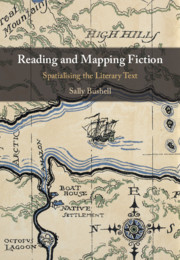Book contents
- Reading and Mapping Fiction
- Reading and Mapping Fiction
- Copyright page
- Dedication
- Contents
- Illustrations
- Acknowledgement of Prior Publications
- Acknowledgements
- Introduction
- 1 A Shifting Relationship: From Literary Geography to Critical Literary Mapping
- 2 Historicising the Fictional Map
- 3 Doubleness and Silence in Adventure and Spy Fiction
- 4 Mapping Murder
- 5 Playspace: Spatialising Children’s Fiction
- 6 Mapping Worlds: Tolkien’s Cartographic Imagination
- 7 Fearing the Map: Representational Priorities and Referential Assumptions
- 8 Reading As Mapping, or, What Cannot Be Visualised
- Bibliography
- Index
8 - Reading As Mapping, or, What Cannot Be Visualised
Published online by Cambridge University Press: 11 June 2020
- Reading and Mapping Fiction
- Reading and Mapping Fiction
- Copyright page
- Dedication
- Contents
- Illustrations
- Acknowledgement of Prior Publications
- Acknowledgements
- Introduction
- 1 A Shifting Relationship: From Literary Geography to Critical Literary Mapping
- 2 Historicising the Fictional Map
- 3 Doubleness and Silence in Adventure and Spy Fiction
- 4 Mapping Murder
- 5 Playspace: Spatialising Children’s Fiction
- 6 Mapping Worlds: Tolkien’s Cartographic Imagination
- 7 Fearing the Map: Representational Priorities and Referential Assumptions
- 8 Reading As Mapping, or, What Cannot Be Visualised
- Bibliography
- Index
Summary
Chapter Eight seeks to approach the intangible subject of the cognitive map for literature from a number of overlapping directions which all point towards a particular model for readerly mapping. Approaching the subject through reader-response theory, ancient models of memory-mapping, and cognitive map theory, the chapter defines a doubled (combined) model of mapping for literary space and place. The book concludes by considering ways forward for the mapping of literature in and through the digital medium in the light of this cognitive model. (83)
Information
- Type
- Chapter
- Information
- Reading and Mapping FictionSpatialising the Literary Text, pp. 273 - 306Publisher: Cambridge University PressPrint publication year: 2020
